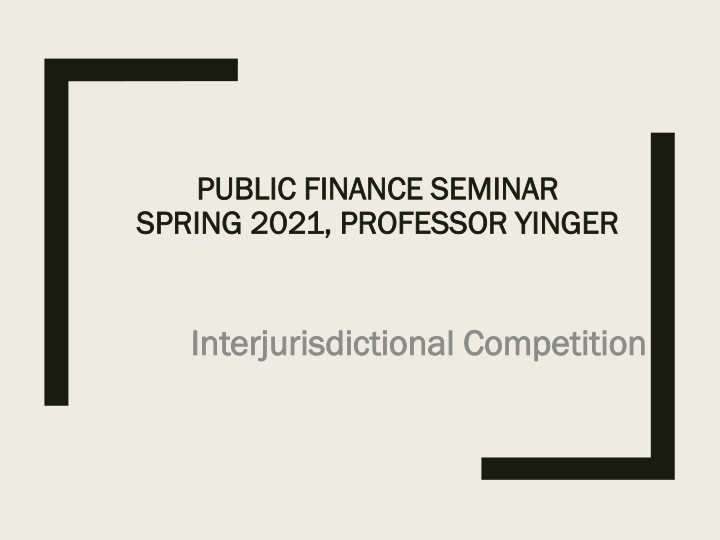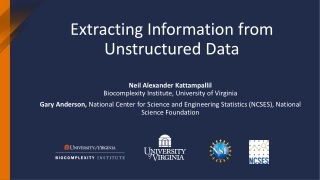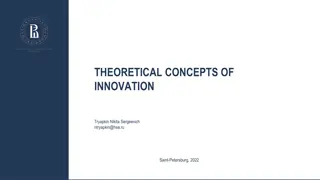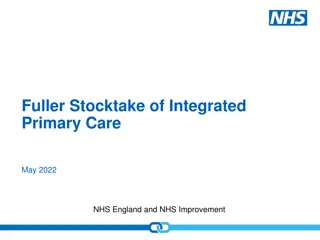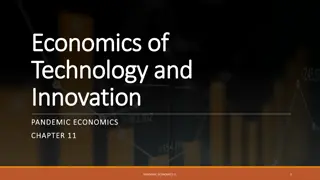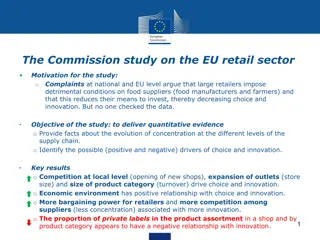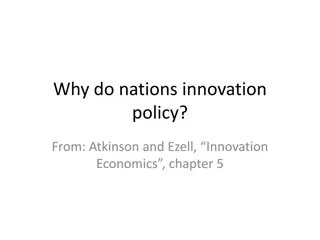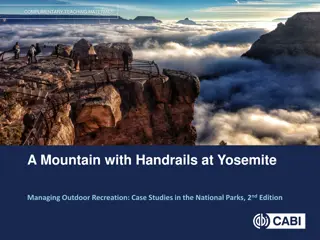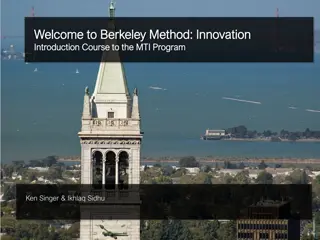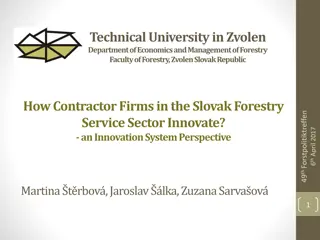Buckminster Fuller's Dome Home Innovation
Buckminster Fuller, known for his revolutionary dome home, patented in 1954, was a pioneer in efficient structures. His dome, assembled in 1960 in 7 hours, was his abode from 1960 to 1971. The home, in a geodesic dome design, offers 1200 sq ft of space, featuring 2 bathrooms, 1 bedroom, living room, and kitchen. Fuller, a professor at SIU, was a key figure in the green movement, with contributions to education and sustainability. Learn about his legacy and impact on modern architecture.
Download Presentation

Please find below an Image/Link to download the presentation.
The content on the website is provided AS IS for your information and personal use only. It may not be sold, licensed, or shared on other websites without obtaining consent from the author.If you encounter any issues during the download, it is possible that the publisher has removed the file from their server.
You are allowed to download the files provided on this website for personal or commercial use, subject to the condition that they are used lawfully. All files are the property of their respective owners.
The content on the website is provided AS IS for your information and personal use only. It may not be sold, licensed, or shared on other websites without obtaining consent from the author.
E N D
Presentation Transcript
PUBLIC FINANCE SEMINAR PUBLIC FINANCE SEMINAR SPRING 2021, PROFESSOR YINGER SPRING 2021, PROFESSOR YINGER Interjurisdictional Competition Interjurisdictional Competition
Tax Competition Tax Competition Class Outline Class Outline Introduction: Types of Intergovernmental Interaction The case of tax competition Recent Studies
Tax Competition Tax Competition Class Outline Class Outline Introduction: Types of Intergovernmental Interaction The case of tax competition Recent Studies
Tax Competition Tax Competition Introduction: Types of Intergovernmental Interaction Introduction: Types of Intergovernmental Interaction In a complex federal system like ours, the actions of one government are not independent of the actions of other governments. This rule applies not only to the obvious case intergovernmental aid but also to decisions that do not involve any direct connection between governments. For example, governments spending decisions are influenced by the spending decisions of their neighbors (or other jurisdictions with which they compare themselves). This issue has already appeared as a guide to the choice of instruments for several studies, including Bill s and my work on school districts in New York.
Tax Competition Tax Competition Introduction, 2 Introduction, 2 More generally, it is possible to identify many types of inter-governmental interaction that are worthy of study: Interaction between governments of the same level, such as between states, between counties, between cities, between school districts Interaction between higher levels of government and lower levels of government, such as interactions between states and counties, states and school districts, or counties and cities. Interactions between overlapping local governments of different types, such as between cities and townships or cities and independent school districts. Decisions to merge or split by the same level of government, such as school districts. Decisions to merge or split by different levels of government, such as towns and villages in New York.
Tax Competition Tax Competition Introduction, 3 Introduction, 3 Several types of behavior might show up in these interactions: A government s taxing decisions may also be influenced by the extent to which its tax base is expected to flow into other jurisdictions if it raises taxes. A governments decisions also might depend on its perceptions of what is acceptable based on what comparison jurisdictions do. This type of behavior is called yardstick or copy cat competition. As we will discuss, there is a large and growing literature on this topic, both conceptual and empirical. After a discussion of some technical issues, we are going to take a look at a few recent empirical studies.
Tax Competition Tax Competition Class Outline Class Outline Introduction: Types of Intergovernmental Interaction The case of tax competition Recent Studies
Tax Competition Tax Competition Tax Competition Tax Competition For an excellent, but somewhat dated, review of the conceptual literatureon tax competition, see J. Wilson, Theories of Tax Competition, NTJ, June 1999. This is not a particularly technical article, but it is intellectually challenging. The issues are difficult to sort out! The initial literature on this topic concluded that inter-jurisdictional competition was likely to lead to inefficiently low low tax rates. The basic intuition: The efficient level of taxation is one that provides public services at the level where marginal benefit equals marginal cost. If tax decisions reflect an additional consideration namely, the desire to attract business then tax rates will be set below this optimal level.
Tax Competition Tax Competition Tax Competition, 2 Tax Competition, 2 More recent work has identified some circumstances under which tax competition might be useful. In a political economy model, for example, in which public officials have their own agendas, tax competition might, in Wilson s words, induce government officials to reduce waste in government. The impact of tax competition on important policy objectives, such as efficiency, is difficult to pin down. Indeed, the set of issues raised by tax competition is amazingly complex. At this point, there is no consensus as to whether tax competition has desirable outcomes or if it does not what to do about it.
Tax Competition Tax Competition Questions Questions What are some of the types of interactions between governments in the US federal system? Why might a government care about the actions of other governments? Why might inter-jurisdictional tax competition lead to a tax rate that is below the efficient level?
Tax Competition Tax Competition Class Outline Class Outline Introduction: Types of Intergovernmental Interaction The case of tax competition Recent Studies
Tax Competition Tax Competition Rork Rork, , NTJ NTJ 2003 2003 Rork estimates a straightforward model: = + + + + T X w T t it it jt jt i it j where T is a tax rate, i indicates a state (and j its neighbors), t stands for time. X is a vector of control variables, w is a set of weights (assumed, not estimated), and are parameters to be estimated, and , , and are error components for the state, the year, and random factors, respectively.
Tax Competition Tax Competition Rork Rork, Continued , Continued This model can be estimated as a system of equations, since there is a T for each state. So Rork stacks the equations, leaving a vector T on each side. He estimates this system with an IV procedure in which the weighted X s from other states, that is, the X s from other states multiplied by the appropriate w, are the instruments. Rork does not provide tests for instrument validity.
Tax Competition Tax Competition Rork s Rork s Data Data Rork obtains data from the Census (State Government Finances) and other sources for 1967 to 1996; the X variables include: Fiscal stress (an exogenous measure??) Per capita debt (a poor choice endogenous!) Per capita federal transfers Political variables Election year Everyone (governor, both houses) Democrat Everyone Republican State characteristics (affected by taxes??) Unemployment rate Per capita income Percent elderly Fixed effects State Year
Tax Competition Tax Competition Rork s Rork s Data, 2 Data, 2 The T variables are Statutory rates For sales tax, gasoline, cigarettes taxes Average tax rates (revenue over base) For income and corporate income taxes
Tax Competition Tax Competition Rork s Rork s Results Results The key coefficients are the estimates of theta the impact of other state s taxes on own taxes. The results are as follows, with everything statistically significant except the first result for the income tax: Tax Tax Equal Weights Equal Weights Population Population- -Based Weights Based Weights Cigarettes Cigarettes Gasoline Gasoline Income Income General Sales General Sales Corporate Income Corporate Income 0.636 0.600 -0.048 -0.237 0.163 0.416 0.416 0.463 0.463 - -0.097 0.097 - -0.164 0.164 0.165 0.165
Tax Competition Tax Competition Rork Rork: Interpretation : Interpretation A positive sign indicates that a higher tax in neighboring jurisdictions leads to a higher tax in state i. A negative sign means that a tax rate declines when neighbors tax rates go up. Rork interprets these results, reasonably, as indications of the responsiveness of the tax base. A positive sign, as in the case of cigarettes, gasoline, and corporate income, indicates that a state can only afford to have a high rate if its neighbors do, too. If the tax base is not responsive (negative sign), as in the case of income and general sales taxes, a state can afford to behave differently than its neighbors.
Tax Competition Tax Competition Rork Rork: Interpretation, 2 : Interpretation, 2 More on a negative sign: If a neighboring state lowers its tax, there will be some loss of revenue in a state, and the state will try to offset that loss by raising its own rate, knowing that the added loss in base will be minimal. If a neighboring state raises its tax, there will be some shift in base toward a state, and the state will maximize revenue by lowering its tax to make that shift as large as possible. This seems a bit odd. Perhaps he should have looked for asymmetric responses. Rork argues that states would do well to switch to unresponsive income and sales taxes and away from responsive excise and corporate taxes. But responsiveness is only one criterion!
Tax Competition Tax Competition Tosun Tosun and Skidmore, and Skidmore, NTJ NTJ 2004 2004 This study looks at the impact of lottery competition on lottery revenue. The data are for West Virginia and the competition comes either from the introduction of lotteries in neighboring states or from the introduction of new lottery games in West Virginia. This study takes advantage of the fact that lotteries were introduced in Kentucky, Virginia, and Maryland after West Virginia already had a lottery.
Tax Competition Tax Competition Tosun Tosun and Skidmore, 2 and Skidmore, 2 The basic equation is: = + + + + L I X C T t it it it i it 1 2 where Litis the log of deflated per capita lottery sales in county i in year t I is the status of lottery games in neighboring states X is a set of control variables, including per capita income, unemployment, share of population over 65, proportion male, proportion non-white, and whether the county has video lotteries video lotteries, which attract new customers from other states. C is a county fixed effect, T is a time effect. Both the lottery in a neighboring state and the video lottery variables are interacted with whether the county is on a state border. Some regressions track these effects over time.
Tax Competition Tax Competition Tosun Tosun and Skidmore, 3 and Skidmore, 3 The data are for all counties in West Virginia for 1987 to 2000 770 observations overall. They find that lottery revenue generally drops when lotteries are introduced in neighboring states. This is true for counties bordering on Kentucky, Virginia, and Maryland. But the results are not entirely clear: one of the results for Maryland is not significant; another result indicates that revenue in border counties increases in the years after introduction in Virginia. For some reason, the most obvious specification is not there: a shock in the first year followed by change in later years. They only estimate shocks or trends. An inter action might have cleared everything up. I suspect the trend is important in Maryland, not the initial shock, and I suspect that there is an initial shock and then an offsetting trend in Virginia.
Tax Competition Tax Competition Tosun Tosun and Skidmore, 4 and Skidmore, 4 They also find that the introduction of video lotteries increases revenue in border counties i.e. steals revenue from neighboring states. (The same goes for casinos!) So there is intense competition for lottery revenues. This creates a prisoner s dilemma. If neighboring states all agreed to give up lotteries, they could move to more reasonable revenue sources. But so long as one keeps them, it is in the interest of others to keep them, too, because of their powerful ability to export taxes to nonresidents (or to prevent the importing of taxes from neighboring states).
Tax Competition Tax Competition Agrawal ( Agrawal (AEJ: EP AEJ: EP 2015), 1 2015), 1 This article looks at the impact of state sales tax rates on local sales tax rates. It uses data on all municipalities in the U.S. with a sales tax, including driving distance (and time) from the population centroid of the municipality to the nearest border crossing into another state.
Tax Competition Tax Competition Agrawal, 2 Agrawal, 2 The first testable prediction of the theory is a level effect: at a border between a high state tax state and a low state tax state, the local taxes in municipalities near the border on the low-tax side should be higher than local taxes in municipalities near the border on the high-tax side. A border town in a low state tax state realizes a smaller elasticity of demand than an otherwise identical town on a high-tax side of the border (because nearby taxes are higher).
Tax Competition Tax Competition Agrawal, 3 Agrawal, 3 The second testable prediction of the theory is a gradient effect: as one moves away from the border in a low-tax state, local sales taxes should fall and the tax gradient is negative; as one moves away from the border in a high-tax state, local taxes should rise and the tax gradient is positive. As one moves away from the border, the influence of the other state s tax rate on consumer behavior declines.
Tax Competition Tax Competition
Tax Competition Tax Competition
Tax Competition Tax Competition
Tax Competition Tax Competition
Tax Competition Tax Competition Agrawal, 4 Agrawal, 4 Discontinuities in the tax system at state borders induce welfare distortions with respect to consumption, as some residents cross borders to purchase lower-tax goods. Firms distort the location characteristics of the good to the favorable tax side of the border, which results in an inefficient product mix. State tax differences create horizontal inequities where individuals with the same ability to pay actually pay different taxes if some residents cross-border shop while others do not.
Tax Competition Tax Competition Agrawal, 5 Agrawal, 5 Discontinuities in the tax system at state borders induce welfare distortions with respect to consumption, as some residents cross borders to purchase lower-tax goods. Firms distort the location characteristics of the good to the favorable tax side of the border, which results in an inefficient product mix. State tax differences create horizontal inequities where individuals with the same ability to pay actually pay different taxes if some residents cross-border shop while others do not.
Tax Competition Tax Competition Agrawal, 6 Agrawal, 6 Agrawal uncover[s] a local tax gradient and dramatic local tax level effects, which reduces these production and consumption distortions at state borders. Although the discrete steps will induce additional small distortions within a state, the reduction of a large salient distortion at the border may be welfare improving.
Tax Competition Tax Competition Zhang ( Zhang (Amer. Journal of Pub. Admin Amer. Journal of Pub. Admin, 2019) , 2019) New York has towns and villages. Villages exist within towns (almost always a single town). Voters can set up villages or dissolve villages without the consent of the town. New York has over 500 villages. In the last 10 years, 50 have voted on dissolution And 22 have voted to dissolve.
Tax Competition Tax Competition Zhang, 2 Zhang, 2 New York has towns and villages. Villages exist within towns (almost always a single town). Voters can set up villages or dissolve villages without the consent of the town. New York has over 500 villages. In the last 10 years, 50 have voted on dissolution And 22 have voted to dissolve.
Tax Competition Tax Competition Zhang, 3 Zhang, 3 Zhang s conceptual framework:
Tax Competition Tax Competition Zhang, 4 Zhang, 4 Zhang s hypotheses: Hypothesis 1a (H1a): A more favorable economic and demographic situation will lower the likelihood of village dissolution, ceteris paribus. Hypothesis 1b (H1b): The more heterogeneous the ethnic composition of a village is, the less likely village dissolution will be considered and successfully approved through referendum, ceteris paribus. Hypothesis 2 (H2): The more a village government trusts its citizens, the less likely dissolution activities, and ultimately dissolution, will take place. Hypothesis 3 (H3): When a government cuts services, incurs more debt, or spends more money on non-service purposes in response to external pressure, village residents are more likely to consider and, vote for, dissolving the government, holding all other factors constant. Hypothesis 4 (H4): A village facing service duplication or higher tension with underlying town(s) is more likely to consider and, vote for, dissolution, ceteris paribus.
Tax Competition Tax Competition Zhang, 5 Zhang, 5 Zhang s method: He has data on village dissolution from 1996 to 2017. Some of the data come from a survey he administered. He has 11,149 observations (villages by year). He conducts a survival analysis on the decision to dissolve. The method is called a Cox proportional hazard model. The model controls for economic, demographic, and fiscal variables.
Tax Competition Tax Competition Zhang, 6 Zhang, 6 Zhang s results: His models demonstrate that unfavorable economic conditions and depopulation are significant drivers of dissolution. The 21-year-long longitudinal survival time analysis also suggests that dissolved villages are often fiscally struggling, reinforcing the perception that village dissolution is less likely to take place in areas with sound structural conditions. He also finds some evidence that votes not to dissolve in nearby villages discourage a village from dissolving, whereas votes to dissolve in nearby villages do not encourage dissolution.
